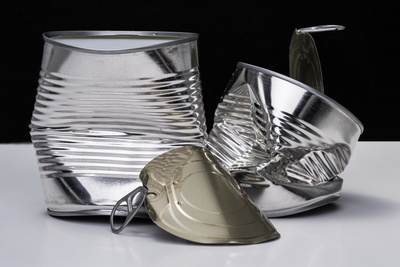The event was attended by producers of semi-finished aluminium products for packaging applications, packaging manufacturers and clients from the food and drink and cosmetics sectors. They agreed that the material loop comprising collection, sorting and recycling must be closed effectively to achieve the best possible resource efficiency.
According to the GDA, as the third most common element in the Earth’s crust, aluminium scores convincingly in this respect: it has the highest scrap value of all packaging materials and consequently provides a major economic incentive to collect used aluminium packaging and to screen it out from the packaging stream with the aid of modern sorting technology. In addition, aluminium is a so-called permanent material that unlike other materials can be recycled time and time again without any loss in quality. It is not surprising therefore that the recycling rate for aluminium packaging has now reached 87 per cent in Germany and is over 60 per cent in Europe. Recycling also offers the added benefit of a 95 per cent energy saving compared with the production of primary aluminium, GDA says.
According to the GDA the implementation of the new European Circular Economy Package has resulted in heated debate of the use of recycled material in packaging. The remarkable fact that 75 per cent of all aluminium ever produced is still in use today plays a key role here. Given the current high level of demand for aluminium from the widest possible range of industries worldwide (automobile, building and construction, electronics, packaging, etc.) and the long service lives of many aluminium products, only about 20 per cent of the aluminium required can be met by using recycled material. “Claiming that certain products have a recycled material content thus has tight physical limitations and could lead to recycled material streams being diverted in a manner that is questionable from ecological and economic points of view,” explains Jörg Schäfer, Head of Sustainability and Recycling at GDA.
In addition to its compelling environmental credentials and sales-promoting premium character, aluminium’s excellent barrier properties also offer clients in the food and drink and cosmetics sectors optimal protection against product loss or deterioration. This means aluminium packaging protects more resources than are consumed during its own production. That is why GDA is also a member of the Save Food initiative of FAO, UNEP, Messe Düsseldorf and interpack.
And even more innovations are on the way. Continual optimisation of the alloys used is reducing the weight of aluminium packaging without impairing its functionality, which in turn is resulting in an additional energy saving during transport and a corresponding improvement in the ecological footprint.
“We are confident that thanks to its convincing ecological, economic and functional advantages sustainable aluminium packaging will strengthen its market position worldwide, thereby benefiting the planet and consumers alike,” adds Gregor Spengler, Head of Packaging at GDA.










